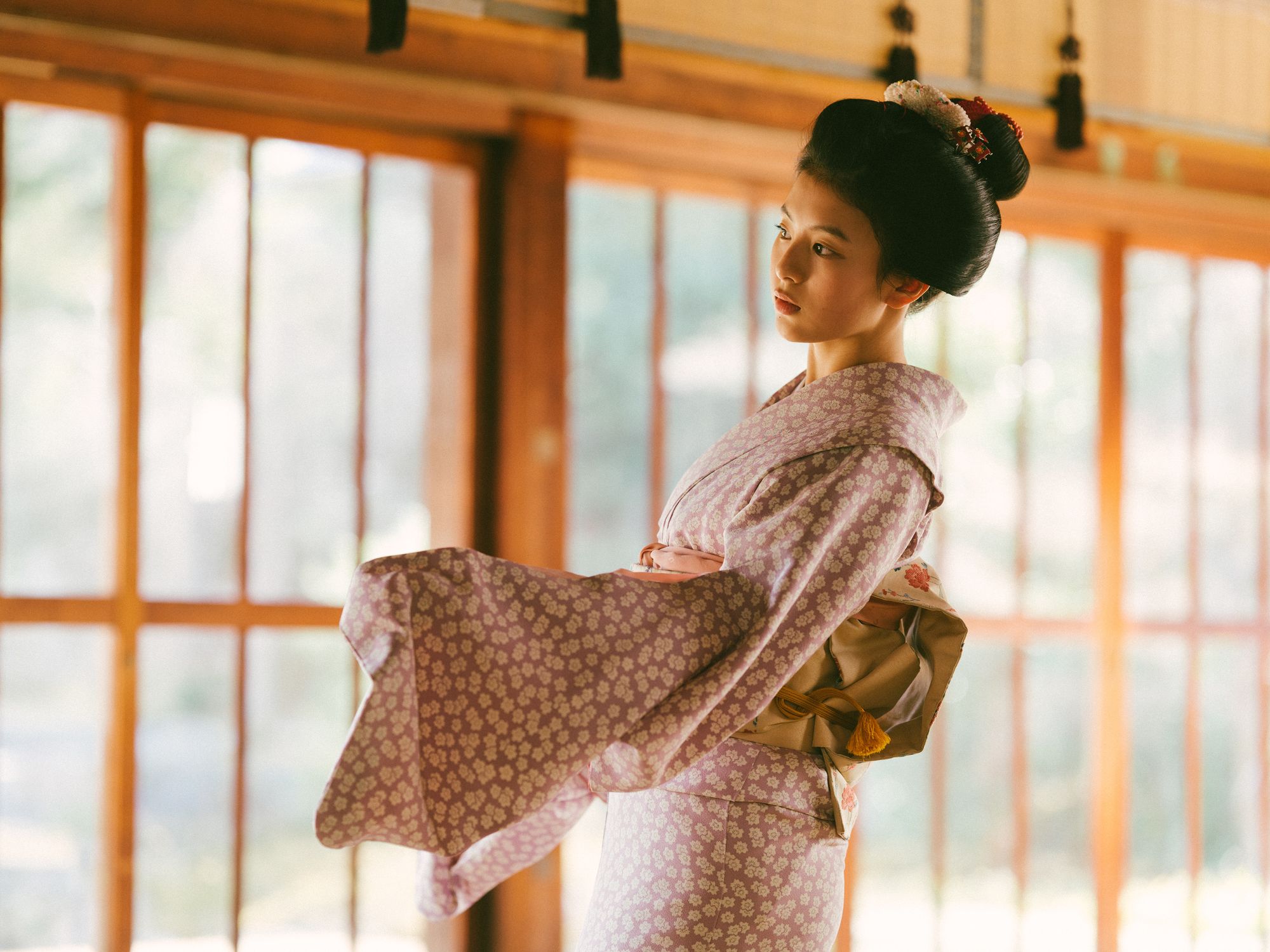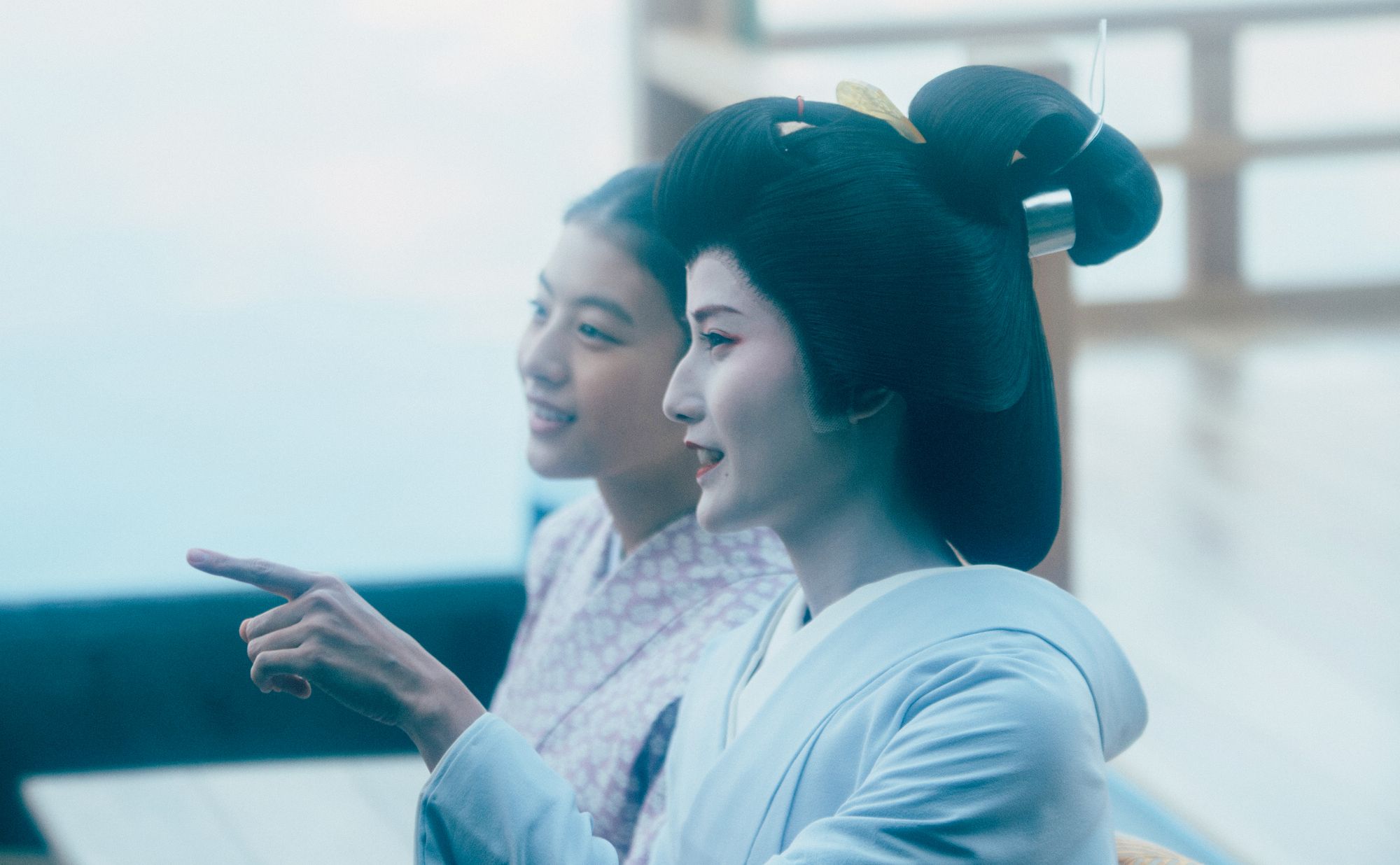By Jessica Lees, Third Year, Politics and Sociology
The Makanai: Cooking for the Maiko House is based on the manga series Kiyo in Kyoto. The series follows Kiyo (Nani Mori) and her friend Sumire (Natsuki Deguchi) who both at 16 years old decide to move from Aomori to Kyoto to become Maikos (an apprentice Geiko/Geisha). The series is incredibly cosy, heart-warming, and beautifully shot.

Firstly, Nana Mori as Kiyo is superb. A few episodes in, it is decided that Kiyo, due to her clumsiness and inability to properly perform the traditional Mai dance, cannot become a Maiko. Her friend Sumire, however, excels as an apprentice and quickly becomes a Maiko. Instead of jealousy for Sumire, Kiyo has absolute admiration and a deep love for her friend, caring for her in multiple ways, such as when Sumire becomes ill, a touching scene.
Not only is there a beautiful dynamic between Kiyo and Sumire but also between all the Maiko girls, with a clear sisterhood that thrives on laughter and joy, which is seen throughout. Kiyo is, without a doubt, infectiously loveable, with a constant smile and love for her newfound job as the cook in the Maiko boarding house.
There is a clear contrast between the beauty and constant glamour of the Maiko’s and Geiko’s against Kiyo in her kitchen cooking; however, her simple love and joy for cooking are unwavering despite it being questioned by characters, putting an emphasis on the simple joys of life.

The exposure to Japanese culture is sublime. The series is all in Japanese however, with Netflix, there is the optional choice of an English dubbed version. I decided to try both and found that the Japanese version with English subtitles provides a more authentic viewing experience and makes you feel far more immersed.
Exposure to culture is rife, from aesthetic shots of Kiyo’s traditional cooking of Japanese fruit sandwiches and white stew to the stunning architecture and streets of Kyoto. Not forgetting the Maiko and Geiko themselves, which are magnificent in traditional kimonos, Geiko Shimada, and kanzashi pins. You will also gain a deeper understanding of the Geiko lifestyle, and the restrictions there are as the stories of some of the characters both quash Geiko stereotypes and provide an insight into a restrictive lifestyle when it comes to love and romance.
Throughout the series, you pick up new words and phrases, broadening your understanding of Japanese culture and language, allowing for a true cultural and educational experience.

The show provides a good balance of comedy and sternness with the older, more traditional characters and mothers of the Maiko house against the modern and younger generation of characters, both sharing a unique and traditional space.
However, this isn’t a fast-paced show. It is a slow, cosy, and sentimental series filled with scenes of friendship, ambient lighting, and generally joyful characters. A show that you may have enjoyed that provides a similar feel is Anne with an E (2017-2019) which too provides characters that you can’t help but love and root for.
The Makanai: Cooking for the Maiko House is full of tenderness, warmth, and delight with delicious food and beautiful friendships. A perfect series to watch this Winter.
Featured Image: Netflix on IMDB
Will you be tuning in to watch Netflix's latest Japanese series?









